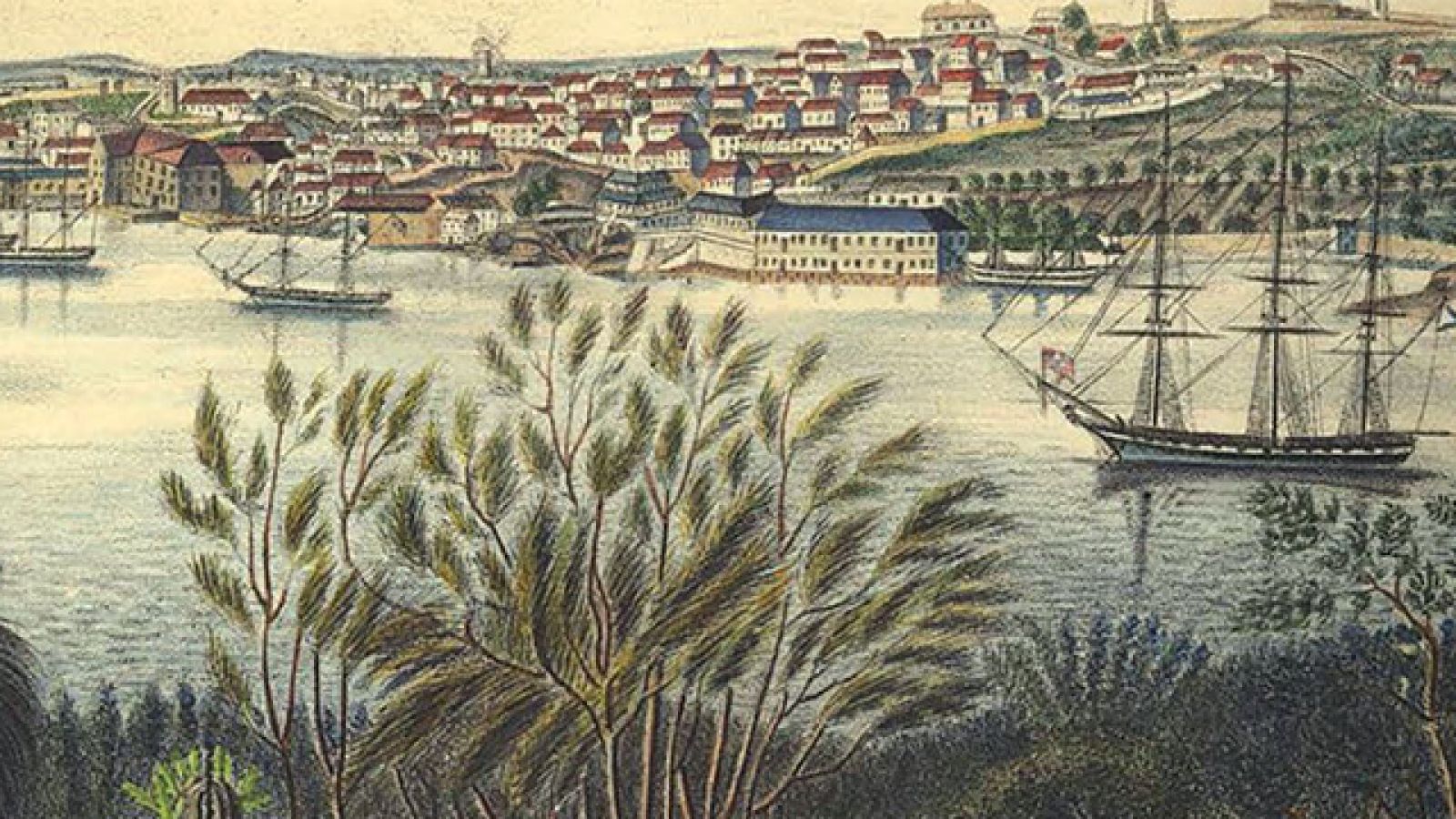New book shows Russians’ views of early Australia

From the cover of From St Petersburg to Port Jackson. Image: supplied.
From St Petersburg to Port Jackson: Russian Travellers’ Tales of Australia 1807 – 1912 is a book that was begun in the era of the Soviet Union and first published after its collapse.
It was a project started by Dr Elena Govor, now an academic across the College of the Asia and Pacific and the College of Arts and Social Sciences, and Professor Alexander Massov, of the University of St Petersburg. Thirty years ago in St Petersburg, they conceived of a collection of accounts by Russians of Australia.
“We did research in archival materials and forgotten Russian periodicals and books,” Dr Govor recalls.
“The idea was to tell Russian readers about the history of Russian-Australian contacts on the basis of primary accounts, and provide explanatory notes on the texts, including biographical material about each visitor.”
Each account was painstakingly copied by hand by Dr Govor and Professor Massov as photocopiers were not accessible in Russian archives or libraries. They then had to type them at home and bring their typed items to the library to double-check them against the originals.
“That was a positive thing, in a way, because we got to know the texts intimately,” Dr Govor adds.
“We knew them almost by heart.”
Their book was published in Russia in 1993, with a second edition in 2007 to commemorate 200 years of Russian-Australian contact. It has now been published in English, with most translations by Dr Kevin Windle, Emeritus Fellow in Translation Studies and Russian, ANU School of Literature, Languages and Linguistics.
Where necessary, Dr Windle also recast the notes accompanying each account and the introductory chapter.
“It was a case of reorienting the book because the book in its original form assumed the background knowledge of a Russian reader, not that of an Australian reader,” he says.
“Things that don’t need explanation to the Russian reader might need to be explained to the Australian reader – and vice versa.”
The accounts that feature in the book are by visitors who were on Russian naval and merchant ships that anchored in Australian ports on their way to destinations such as “Russian America” (now Alaska), California, and Hawaii.
The visitors included naval officers, scientists and artists. They wrote about colonial Australia, the convict system, Aboriginal Australians, local wildlife, and settlers’ lives.
One account which Dr Windle enjoyed translating was by Ogievsky, a ship’s surgeon, who described the wildlife he saw in Tasmania in 1824.
“We have a kind of descriptive catalogue of the birds and animals he saw, including an ‘opossum-hyena’, a name then used for the thylacine or Tasmanian tiger.”
An account by the naturalist and anthropologist Alexander Yashchenko detailed his observations of and encounters with Indigenous Australians. He visited Australia in 1903 and noted their continued practice of their traditions, despite living on missions.
“Yashchenko made a trip from north of Lake Eyre to a mission presided over by the Lutheran Pastor Johann Reuther, from Germany, who had lived with the Aborigines for many years,” Dr Govor says.
“Reuther had written several manuscript volumes recording all aspects of the Aborigines’ culture and shared his observations with Yashchenko, who took many stone tools and artefacts back to Russia.”
Yashchenko was arrested in 1937, aged in his 80s, and executed during Stalin’s purges. Dr Govor traced and interviewed his great granddaughter, who told her that some of the Aboriginal artefacts he had acquired were thrown into a ravine when he was arrested.
From St Petersburg to Port Jackson also reveals the peaks and troughs in the bilateral relationship across the 19th century.
“In the early period you had exploratory missions, and the Russian visitors were welcomed and feted by the governors of New South Wales and Tasmania,” Dr Windle says.
“They were the first to bring news of the defeat of Napoleon in 1813.”
At that time, Russia and Britain were allies against France.
“Later in the century, things were very different; the Crimean war (1853-1855) brought long-lasting suspicion of Russia in Britain, and in Australia.”
Dr Govor adds: “If you go to any coastal townships in New South Wales and ask about their historical defence installations, such as gun batteries, you will learn that they were built to repel a Russian invasion.”
Dr Govor says that the new book is very important for modern Australians because it offers an insight into how the Russian-Australian relationship has evolved.
“Our primary texts have much to tell Australians about Russia and Russians, their view of Australia as they found it in the 19th century, and the preconceptions and prejudices they brought with them.”
Dr Windle agrees: “The accounts tell us a great deal about Australia through a century when change was immense, and at the same time reveal much about the visitors and their Russian perspective.”
From St Petersburg to Port Jackson: Russian Travellers’ Tales of Australia 1807 – 1912 is published by Australian Scholarly Publishing and will be launched by Professor Sheila Fitzpatrick from the University of Sydney on 21 October.